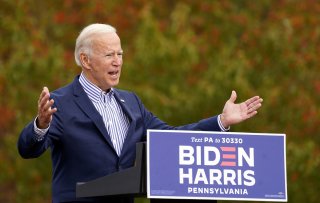Joe Biden's Plan to Save America (Way Better Than a Stimulus Check)
When Biden gave his address to both houses of Congress last Wednesday night, marking his hundredth day in office, he had good reason to run a victory lap. The president also chose it as a stage to introduce his “American Families Plan,” an economic recovery plan covering the needs of working families in the United States.
Over the first three months of his presidency, Joe Biden has had much to be happy about. The COVID-19 pandemic appears to be on its way out. The economy is improving; vaccines are being distributed with greater efficiency; unemployment is decreasing, and the economy is doing well.
For these reasons, when Biden gave his address to both houses of Congress last Wednesday night, marking his hundredth day in office, he had good reason to run a victory lap. The president also chose it as a stage to introduce his “American Families Plan,” an economic recovery plan covering the needs of working families in the United States.
The plan did not include a fourth stimulus check – to the disappointment of some progressive Democrats, many of whom support another round of stimulus spending. But the rest of the plan is a checklist of progressive priorities:
Child Income Tax Credit. The plan includes a massive increase in the government’s Child Income Tax Credit, a refund that parents can claim on their taxes. Prior to the COVID-19 pandemic, the annual credit was $2000; as an emergency measure during the pandemic, that amount was increased to $3600 per year for children under six and $3000 per year for children older than six. This rule is set to expire later this year; Biden proposes to extend it through 2025.
Free Community College. College tuition is astonishingly expensive, and one of Senator Bernie Sanders’ (I-VT) most popular proposals during his 2016 presidential campaign was public financing of universities. Though the cost of paying for all universities would be prohibitively expensive for the government, public financing of community colleges is a much more modest goal – and the increased competition from free community colleges would probably decrease the cost of private universities’ tuition as well. Today, a two-year stint at a community college costs an average of $3600 per year, so the proposal could save families $7200 overall.
Childcare Subsidies. The government currently allows some childcare-related expenses, such as the costs of daycare or a nanny, to be written off on taxes. The American Families Plan would expand this, capping payment for daycare at seven percent of the parents’ income. This could be the single largest item in the plan; right now, most parents spend roughly 35 percent of their annual income on child-related expenses, although that number includes other costs as well.
Free Pre-K. One of Biden’s more interesting proposals is the idea of making pre-kindergarten education free for young children. The savings to families from this are hard to quantify, but since it frees the parents to work, it gives them the opportunity to earn more.
Paid Family Leave. Biden proposes that paid family leave of $4000 per month be instituted for 12 weeks, for a total of roughly $12,000 in savings – in addition, of course, to the benefits of the parents spending time with their newborn.
It’s important to note that none of these proposals are laws yet – and most of them are likely to meet opposition in Congress, on the basis of the plan’s $2 trillion cost. However, one post-speech poll suggested that 85% of American viewers approved of the speech. If this is any indication of popular support for the priorities expressed in the American Families Plan, the hurdles it has to passing might shrink as people make their voices heard.
Trevor Filseth is a news reporter and writer for the National Interest.

